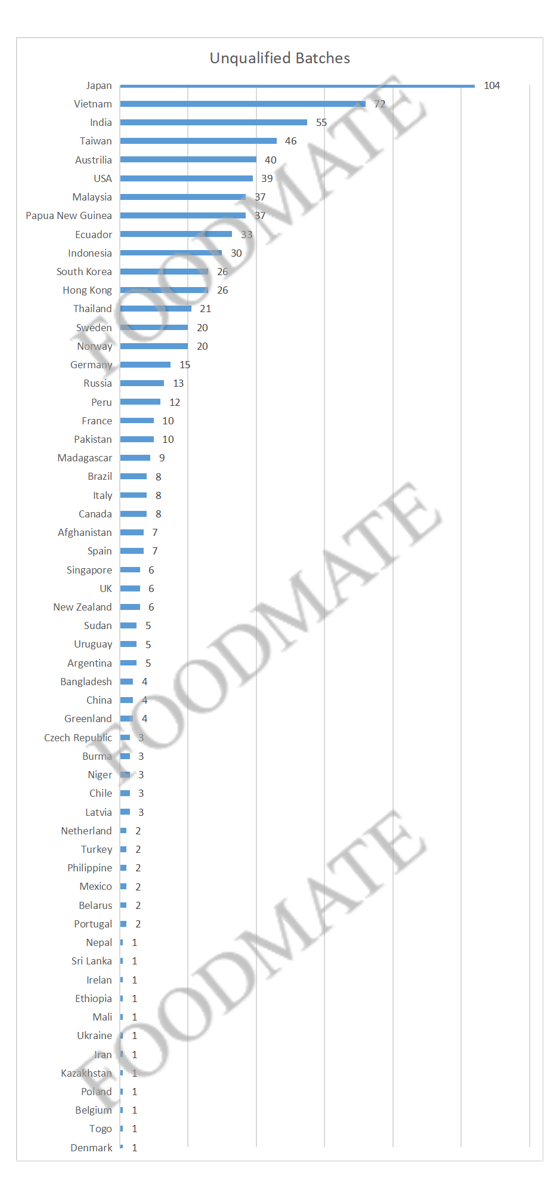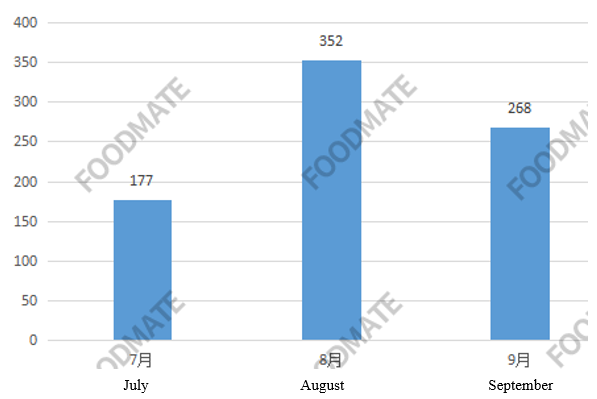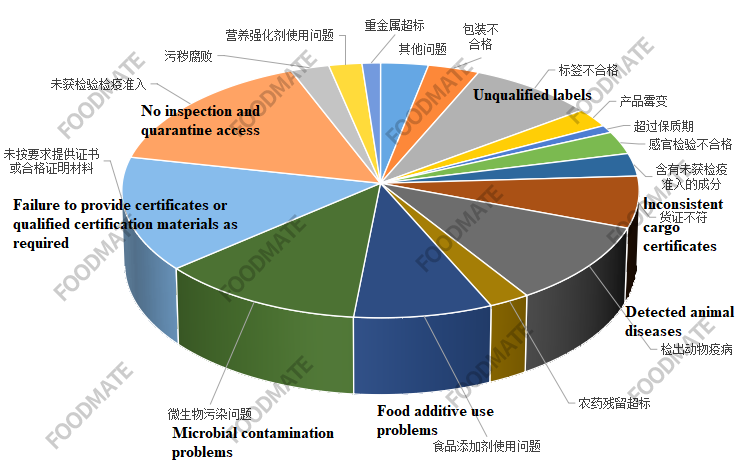According to the information on non-entry food and cosmetics released by the General Administration of Customs(GACC), FoodMate has compiled statistics on the situation of non-entry food in the 3rd quarter of 2021 (July-September). From July to September, GACC detected 797 batches of unqualified and non-entry food items in the port supervision process, an increase of 19% from the 670 batches in the third quarter of 2020.
Judging from the month of announcement, the largest number of non-entry foods were detected in August, with 352 batches. In addition, 177 batches of unauthorized food were detected in July, and 268 batches of unauthorized food were detected in September.
Number of food batches not allowed to enter China from July to September
According to statistics, these foods were not allowed to enter China at 25 ports, involving Beijing, Dalian, Fuzhou, Gongbei, Guangzhou, Harbin, Haikou, Hangzhou, Hefei, Huangpu, Jinan, Jiangmen, Kunming, Nanjing, Nanning, Ningbo, Qingdao, Xiamen , Shanghai, Shenzhen, Tianjin, Wuhan, Zhanjiang, Changsha, Chongqing.
The origin of non-entry food involves more than 50 countries or regions, including Afghanistan, Argentina, Ethiopia, Ireland, Australia, Papua New Guinea, Pakistan, Brazil, Belarus, Belgium, Poland, Denmark, Germany, Togo, Russia, Ecuador, France, the Philippines, Greenland, Kazakhstan, South Korea, the Netherlands, Canada, the Czech Republic, Latvia, etc. Among them, Japan has the largest number of non-entry foods, with 104 batches, involving candy, French fries, instant noodles, chocolate, beverages, jelly, biscuits and other products.

It is found through the statics that in the 3rd quarter, the reasons of disqualification were mainly due to 7 aspects including no inspection and quarantine access, unqualified labels, inconsistent cargo certificates, detected animal diseases, misuse of food additives, microbial contamination and lack of certificates or qualified certification materials as required. There are also problems such as unqualified packaging, product mildew, expiry date, unqualified sensory inspection, contain ingredients that have not been quarantined, excessive pesticide residues, filth and corruption, use of nutritional supplements, and excessive heavy metals. In addition, there are very few foods with parasites detected, non-edible additives detected, unqualified quarantine, and imported from prohibited areas. Among them, there are 130 batches without inspection and quarantine access.
Reasons for unqualified food
It is reported that the food that has not been allowed to enter China has been returned or destroyed at the port. FoodMate would like to remind importers that overseas exporters and overseas manufacturers should be audited before importing to ensure that the food meets Chinese laws and regulations and national food safety standards. In addition, consumers should remember to check whether the product has Chinese labels when purchasing imported foods. The Chinese labels should include the food name, ingredient list, net weight, and place of origin and other information. At the same time, there must be an inspection and quarantine certificate, which consumers can obtain from the dealer. In addition, when buying imported food, you must go through formal channels, and do not trust overseas shopping easily.




